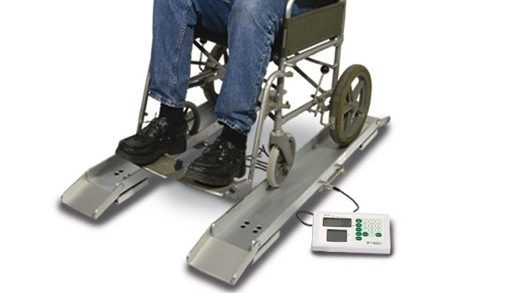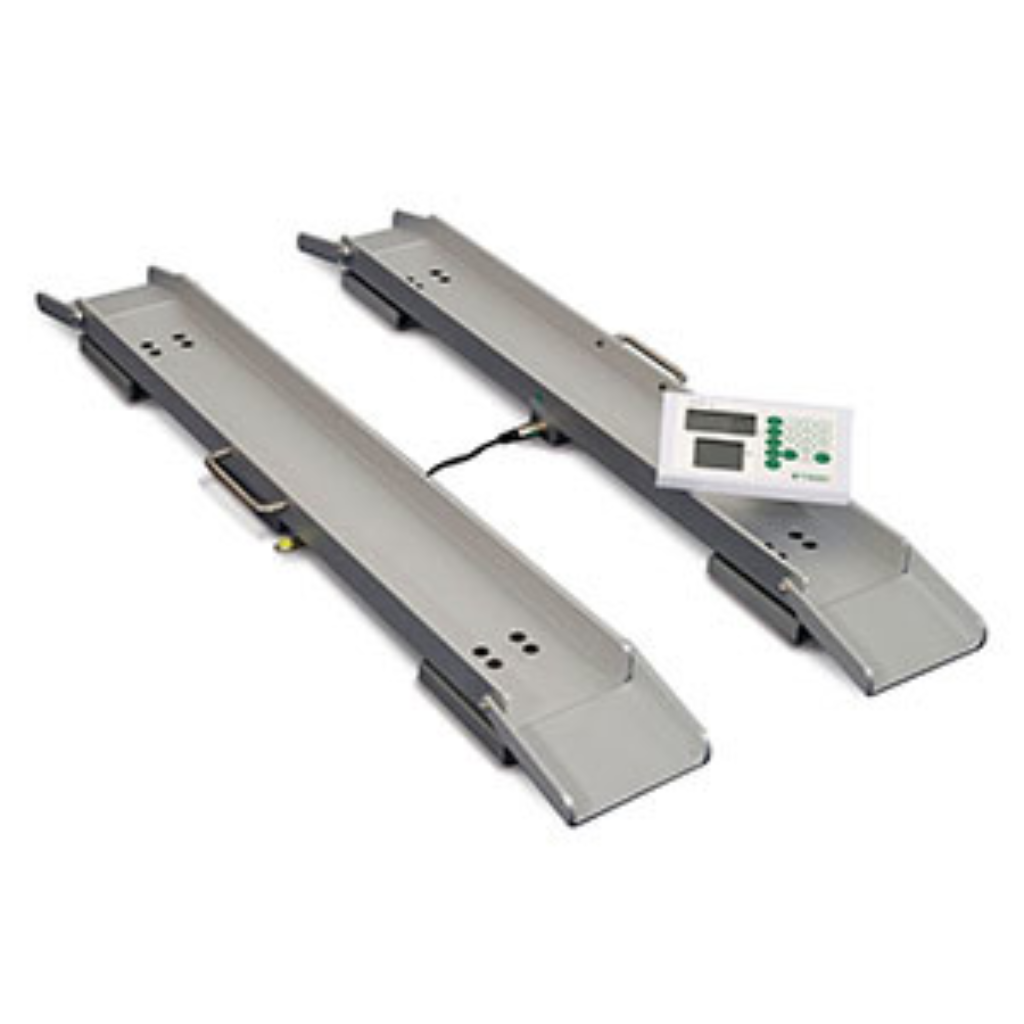Best practice: How to weigh someone in a wheelchair at home

Pictured above: Marsden M-610 Wheelchair Weigh Beams.
Managing weight at home is important for wheelchairs users because it prevents hospital visits and also increases independence.
According to Rough Draft Ventures, obesity is twice as likely to occur in people who use wheelchairs compared to those who don’t.
So, regular weighing with medical scales will help you to keep an eye on your weight, meaning you can react to any gains in weight - and in turn improve your body health.
Previously in our best practice series we looked at ‘how to weigh someone who can’t stand’ and ‘how to weigh someone in a wheelchair’ - in this blog post, we provide some helpful advice on how to weigh someone in a wheelchair at home.
Which Wheelchair Scales are Best?
Home users purchase weighing scales from Marsden for home use every day, and when it comes to scales for wheelchair users there are a few favourites.
The most convenient scale for weighing someone in a wheelchair at home is the Marsden M-610, pictured below, because it is portable, easy to set up and, because it takes up less space than most wheelchair scales, easy to store away when not in use.

Alternatively, if you are looking for a more permanent solution there is the Marsden M-650, and its variants which come with handrails.
Another option is a chair scale - a wheelchair with a scale fitted - which would mean the wheelchair user would simply need to transfer from their own wheelchair to the chair scale. The most popular choices for home use are the Marsden M-225, or if you would prefer a larger seat and capacity, there is the Marsden M-200.
For the purposes of this blog post, we have focused on using the M-610, since this is the most popular weighing scale for weighing wheelchair users at home.
Are You Using the Scale Alone or With Assistance?
Whether you are a wheelchair user who has someone to assist in the weighing process or using the scale without assistance will determine how you obtain the weight reading.
If you are using the wheelchair scale with assistance - which is generally advised - obtaining a weight reading will be quicker and easier. However, it is not impossible to obtain a reading by yourself.
Positioning the scale
To ensure weight readings are accurate it is important that the scale is located on a hard, flat surface.
If a scale is used in a carpeted area, the danger is that the weighing scale can sink into carpet - and this can cause weight readings to be inaccurate. More information can be found here.
In the case of the M-610, the beams need to be positioned the required distance apart to suit the size of your wheelchair. With the beams laid out and the indicator connected, you can switch the scale on. The lead from the beams to the indicator is long enough to allow a wheelchair user to hold the indicator whilst in the wheelchair, before and during weighing.
Getting an accurate weight reading
The easiest way for a wheelchair user to get an accurate weight reading is by using the Tare/Preset Tare function. The Tare/Preset Tare function allows you to remove the weight of the wheelchair from the display, so that the indicator only shows your weight.
Although using Tare/Preset Tare is the best way to get an accurate weight reading, if you are simply wanting to track weight loss or gain, you may want to skip this step.
Using Tare requires the empty wheelchair to be placed on the scale and weight reading taken before the user is weighed. However, Preset Tare may be much more convenient since it allows you to tare off a weight that you have inputted into the scale. If you know the weight of the wheelchair, this will make weighing much simpler and quicker, and won’t require the wheelchair to be weighed alone before every weighing session.
The weight of your wheelchair is likely to be found on the wheelchair itself, on the packaging for your wheelchair or on the manufacturer’s website.
Turn on the scale by pressing the ON/OFF button. Load Preset Tare by holding down the Tare button for three seconds, then press Tare again and the extreme left digit will flash. You can then enter the weight value of the wheelchair by using the numeric keypad on the indicator. Press Tare again to confirm and a minus reading will be displayed on the indicator.
You can then get on the scale. The scales are built with a gentle incline on the ramps to enable ease of use. The weight of the wheelchair will be deducted from the reading, leaving just your weight on the indicator.
Most of our scales can be used with this printer should you need a record of your weight readings.
Calculating BMI
To assess BMI, press the BMI button on the indicator. Height can be entered using numeric keys, and confirmed by pressing Hold. BMI will be displayed on the bottom display, beneath weight and height.
You can also read our guidance on how to quickly and accurately calculate BMI.
Related Products
Further help
As mentioned above, the Marsden wheelchair scales most commonly used at home are the Marsden M-610, followed by the Marsden M-650, Marsden M-651, Marsden M-652 and Marsden M-653. Alternatively there are the Marsden M-200 and Marsden M-225 chair scales to consider.
You can view our full range of wheelchair scales. If you need any further help with how to weigh someone in a wheelchair at home, you can speak to our team on 01709 364296 or contact us here.